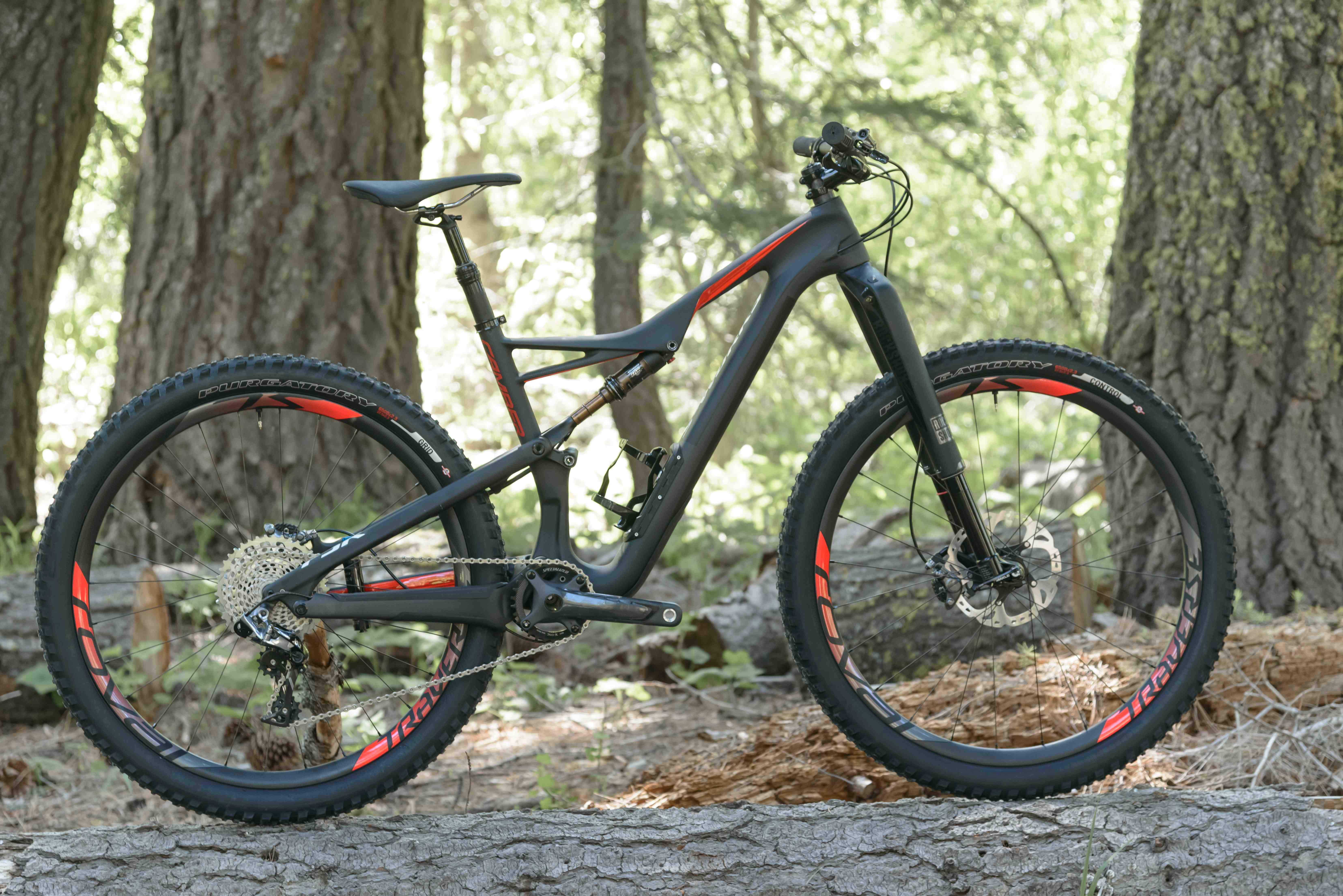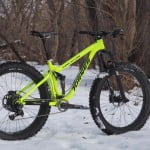 I could hardly see through my muddy, water-splashed glasses as we raced to the bottom of Mills Peak trail on the tail end of a torrential thunderstorm. Parts of the trail resembled a creek more than singletrack at times, but the redesigned Specialized Camber was hardly phased by the rocks I couldn’t see. Wet disc brakes howled through the trees as we splashed through puddles like little kids on bikes that blend trail fun with cross-country speed. Specialized is on a tear this year with its new mountain bike line and has chosen prime locations to present its new models, like Rotorua, New Zealand for its Stumpjumper and Rhyme launch. Specialized picked the awesome trails surrounding the town of Graeagle, California to show off its redesigned Camber and all-new 2FO Cliplite shoe. Downieville is just over the mountain and may get all the fame, but the trails on the Graeagle side are arguably some of the best in the whole Sierra range and the perfect place to test a trail bike’s mettle.
I could hardly see through my muddy, water-splashed glasses as we raced to the bottom of Mills Peak trail on the tail end of a torrential thunderstorm. Parts of the trail resembled a creek more than singletrack at times, but the redesigned Specialized Camber was hardly phased by the rocks I couldn’t see. Wet disc brakes howled through the trees as we splashed through puddles like little kids on bikes that blend trail fun with cross-country speed. Specialized is on a tear this year with its new mountain bike line and has chosen prime locations to present its new models, like Rotorua, New Zealand for its Stumpjumper and Rhyme launch. Specialized picked the awesome trails surrounding the town of Graeagle, California to show off its redesigned Camber and all-new 2FO Cliplite shoe. Downieville is just over the mountain and may get all the fame, but the trails on the Graeagle side are arguably some of the best in the whole Sierra range and the perfect place to test a trail bike’s mettle.
Specialized calls its new Camber a confident trail bike made for speed, and a cross between the Epic and Stumpjumper models. The big news is the addition of 27.5-inch wheeled (or 650b, as Specialized likes to call it) models and its new, position-sensitive Brain shock. “This is the type of Brain we always wanted to develop” says mountain bike marketing manager Sam Benedict. While the Epic’s Brain is always engaged, the Camber’s Brain does not engage until its sag point at 25 percent of travel. Like the Epic, the Specialized Camber’s Brain sits at a 16-degree angle to be more in line with the impact forces that activate it. All Brains get a Spike valve and compression circuit that Specialized says dumps oil at high rate under big hits.
Specialized S-Works Camber FSR Carbon 650b
In addition to the new wheel size offering, geometry is totally new for 2016. Gone is the Evo version, but geometry is Evo-like with short stays, a low bottom bracket, long front center, and slack head angle. At 68.5 degrees, the head angle on the 29er Camber is a full degree more relaxed than the 2015 version. Wheel travel is set at 120mm on the 29er and 130mm on the 27.5-inch model. Like the Epic, the Camber’s FSR shock linkage has a lighter concentric pivot design where the shock yoke, link, and seatstays all meet at the same point. Fun fact: The Camber and Stumpjumper models utilize the exact same wheel-size-specific front triangle. This means the carbon Cambers have that amazing SWAT compartment on the downtube. Although the bikes look 1X drivetrain specific, the Specialized Camber is Taco Blade-compatible so you can install a front derailleur.
I spent a day on an S-Works Camber FSR Carbon 29 on the Mills Peak trail. Right away, I was impressed with the efficient feel of the Camber’s suspension. The climb was primarily fire road and the Camber felt very much like a traditional Brain-equipped bike, with a firm-feeling platform to pedal against, but also the ability to open up and react to rough choppy areas. It felt light and eager to climb with a sense of urgency that many trail bikes lack.
Specialized S-Works Camber FSR Carbon 650b integrated SWAT compartment
After checking out the Mills Peak lookout, we hit the rocky singletrack descent. It was here that I first really felt the position-sensitive Brain at work. The Camber resists the tendency to ride high in its travel that sometimes comes with a Brain—it settles into corners naturally and seems to be a little more supple off the top of the stroke. It also felt somewhat progressive: Its geometry lets you ride way more aggressively than a purebred XC race bike. Suspension-wise, I’d say the Camber feels more like an Epic, but geometry and handling-wise it’s closer to a Stumpy. It’s a combo that’s going to hit a sweet spot for a lot of trail riders out there.
[“source-bicycling”]





